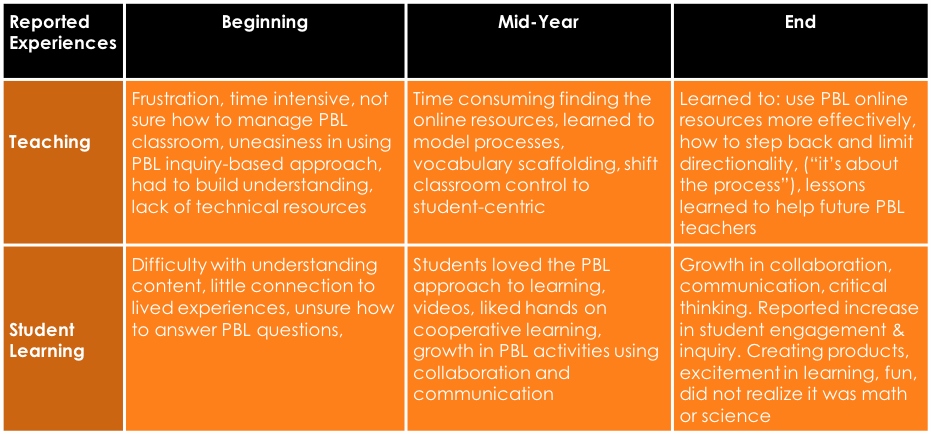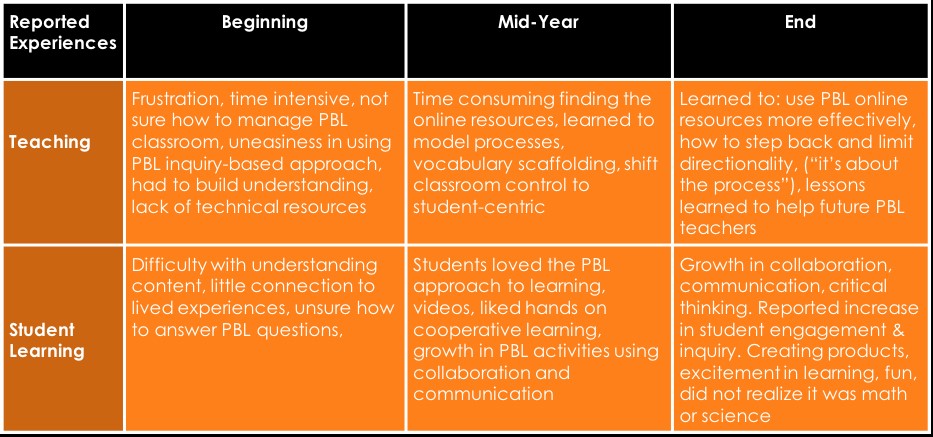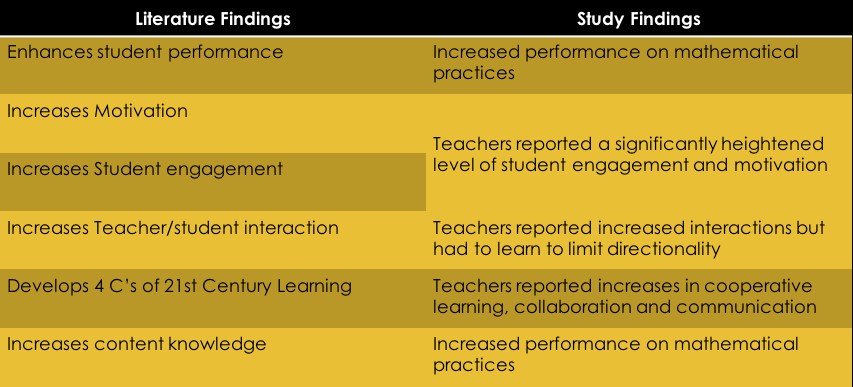A case study conducted by my colleagues and me at MIDA Learning Technologies compared elementary classes that were piloting project-based learning (PBL) against classes that were continuing to use the district’s traditional curriculum. Our findings were consistent with a broad array of existing research that supports the use of project-based learning to drive student outcomes.
Existing Research on Project-Based Learning
To better understand the findings of the study we conducted, we sought out and reported on the existing body of literature pertaining to project-based learning. The research consistently showed that students taught through PBL displayed:
- enhanced student performance
- increased student motivation and engagement
- improved teacher/student interaction
- Increased development of 4 C’s of 21st Century Learning: creativity, critical thinking, collaboration, and communication.
One particular landmark study on project-based learning outcomes conducted by SRI International, and supported by NSF, examined 3000 middle school students and 100 teachers in a large and diverse urban school setting. Researchers of that study reported three major findings. Students in the project-based curriculum outperformed students in the traditional setting on post-unit assessments. The project-based approach leveled scoring among underrepresented demographics as well as leveling scores between males and females. And finally, teachers were more likely to engage students as teacher/student interactions increased significantly over time.
Our Research: What Impact Does PBL Have on Student Achievement in Science and Math?
The study we conducted specifically examined Common Core Mathematical Practice 1: Making sense of problems and persevering in solving them. We measured student performance using a rubric designed to evaluate discrete traits related to the problem-solving process. The unique design of the study was that we were searching for the transference of problem-solving ability in mathematics, even though the project-based lessons occurred in science classes.
In the quantitative analysis of posttest data for the control and experimental groups in 2nd and 5th grades, findings revealed significant differences in posttest success between the control and experimental groups in second and fifth grades. In both grades, the experimental group, which received the project-based learning curriculum from Defined Learning, a web-based PBL supplementary curriculum resource, outperformed the control group. Furthermore, the females in the second grade outperformed the males in between-group and within-group comparisons. The fifth-grade females scored slightly higher than the males, however, this difference was not deemed to be significant.
As a part of the study design, our team also conducted focus groups and interviews at the beginning of the school year, at mid-term and close to the close of the school year. The interviews suggested an upwardly trending growth pattern in teachers’ abilities to employ and effectively use project-based learning. The end of year findings shows a professional growth pattern as teachers became comfortable in creating a project-based learning environment.


The final analysis of the data, both quantitative and qualitative, was consistent with the growing body of literature that suggests that project-based learning is an excellent teaching strategy.

We were struck by one question, in particular, that was asked after our presentation. “If the results are so consistently good, why aren’t more schools and teachers employing this teaching strategy?”
The answer is complex for sure, but two barriers stand out:
- Teachers need to participate in meaningful professional development to be able to migrate from traditional teaching techniques to those used (i.e. inquiry and self-directed research) in a project-based classroom. It is a true departure from a traditional – teacher led – environment and takes both training and practice.
- Secondly, designing project-based learning is hard. It takes a lot of time to create the project-based scenario and the associated performance tasks that allow students to engage with the content through differentiated performance channels.
As we worked with the school district that was the focus of the study, we realized that resources like Defined Learning remove a major barrier; designing projects to support this teaching/learning strategy. Defined Learning provides a vast catalog of pre-designed projects and associated performance tasks. Resources like Defined Learning coupled with an effective professional development effort are a recipe for success in implementing a teaching strategy that consistently shows effective results with students.
About the Author:
Dr. Kerry Speziale is the Chief Academic Officer for MIDA Learning Technology, LLC, a Pennsylvania-based educational consulting company. She is also an adjunct professor at Wilkes University and a 5th-grade teacher at Dallas School District, Dallas, PA. Dr. Speziale was also an elementary mathematics coordinator. She was honored in the past as the PA Elementary Mathematics Teacher of the Year and also received the PASCD Young Educator of the Year Award.